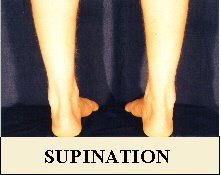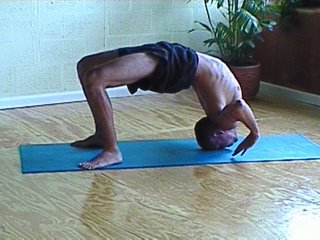Yoga Made it to the Final Four
March Madness is here. I'm talking NCAA basketball.
I lost interest in televised sports long ago. But the winnowing of the field from the Elite Eight down to the Final Four has offered surprises to which even I can't resist paying attention.
Unless you've been nowhere near a sportscast, you already know that 11th-seeded George Mason University knocked off the top-seeded UConn Huskies--in overtime. They're now in the Final Four, bearing the moniker "Kryptonite Kids," along with three other teams that weren't supposed to make it either.
I heard George Mason's coach, Jim Larranaga, giving a radio interview the morning after the victory. He said something like this:
Don't they sound contradictory to you? Effort. Relaxation. They just don't go together. They're opposites.
I guess you could refer to the George Mason basketball team as a living, breathing example of the union of opposites.
Did I just say "union of opposites"? I did indeed. And "union of opposites" is the definition of the word yoga.
Yoga made it to the Final Four. You heard it here first.
When Patanjali wrote about yoga in the YogaSutras he referred to two core principles on which his entire system of yoga rests: abhyasa and vairagya.
Abhyasa is practice. One commentor wrote that, "[a]bhyasa means having an attitude of persistent effort to attain and maintain a state of stable tranquility." (Emphasis added.)
Vairagya, on the other hand, is non-attachment.
Imagine what it must be like to train, practice and execute with such dedication and fervor that you arrive at a previously unimagined level of performance, only to be sidetracked by your thoughts, your sense of not belonging or not deserving, or your fear of disappointment.
Somehow, Larranaga and the Kryptonite Kids managed to avoid that fate by doing both, abhyasa and vairagya. You can, too.
Don't just read about it. Get up. Experience it. Experience yoga!
Kevin Perry
www.ExperienceYoga.org
 p.s., The Sanskrit word of the day from my last Daily Yoga Tip was pada. Pada means foot or leg, as in eka pada rajakapotasana, the one-leg lord of the pigeons pose.
p.s., The Sanskrit word of the day from my last Daily Yoga Tip was pada. Pada means foot or leg, as in eka pada rajakapotasana, the one-leg lord of the pigeons pose.
p.p.s., Today's Sanskrit word of the day is chatura. I'll tell you what it means next time.
p.p.p.s, I didn't know I'd spark so much excitement, interest and commentary with my Daily Yoga Tips about the 5-minute bridge pose and the picture of the neck bridge.
I'll have more to say on those and related topics later this week.
Thank you, all of you, for your sincerity and for writing me with your questions and thoughts.
Copyright 2006.
All rights reserved, Mo Yoga LLC.
Kevin Perry
Mo Yoga LLC
1305 Elmerine Ave
Jefferson City, MO 65101
(573) 680-6737
I lost interest in televised sports long ago. But the winnowing of the field from the Elite Eight down to the Final Four has offered surprises to which even I can't resist paying attention.
Unless you've been nowhere near a sportscast, you already know that 11th-seeded George Mason University knocked off the top-seeded UConn Huskies--in overtime. They're now in the Final Four, bearing the moniker "Kryptonite Kids," along with three other teams that weren't supposed to make it either.
I heard George Mason's coach, Jim Larranaga, giving a radio interview the morning after the victory. He said something like this:
It's not about who we played. It's not about where we played. It's about how we played. We executed our game plan with effort and intensity. Without effort, you can't achieve anything.What did Larranga's players have to say in their interviews after they big game? They praised their coach for helping them stay loose and relaxed.
Don't they sound contradictory to you? Effort. Relaxation. They just don't go together. They're opposites.
I guess you could refer to the George Mason basketball team as a living, breathing example of the union of opposites.
Did I just say "union of opposites"? I did indeed. And "union of opposites" is the definition of the word yoga.
Yoga made it to the Final Four. You heard it here first.
When Patanjali wrote about yoga in the YogaSutras he referred to two core principles on which his entire system of yoga rests: abhyasa and vairagya.
Abhyasa is practice. One commentor wrote that, "[a]bhyasa means having an attitude of persistent effort to attain and maintain a state of stable tranquility." (Emphasis added.)
Vairagya, on the other hand, is non-attachment.
Vairagya involves learning to actively and systematically encounter, explore and let go of the many attachments, aversions, fears, and false identities that are clouding the true Self.Isn't that just what it took to get the Patriots into the Final Four, by their own admission?
They work together. Practice leads you in the right direction, while non-attachment allows you to continue the inner journey without getting sidetracked into the pains and pleasures along the way. (Swami Jnaneshvara Bharati)
Imagine what it must be like to train, practice and execute with such dedication and fervor that you arrive at a previously unimagined level of performance, only to be sidetracked by your thoughts, your sense of not belonging or not deserving, or your fear of disappointment.
Somehow, Larranaga and the Kryptonite Kids managed to avoid that fate by doing both, abhyasa and vairagya. You can, too.
Don't just read about it. Get up. Experience it. Experience yoga!
Kevin Perry
www.ExperienceYoga.org
 p.s., The Sanskrit word of the day from my last Daily Yoga Tip was pada. Pada means foot or leg, as in eka pada rajakapotasana, the one-leg lord of the pigeons pose.
p.s., The Sanskrit word of the day from my last Daily Yoga Tip was pada. Pada means foot or leg, as in eka pada rajakapotasana, the one-leg lord of the pigeons pose. p.p.s., Today's Sanskrit word of the day is chatura. I'll tell you what it means next time.
p.p.p.s, I didn't know I'd spark so much excitement, interest and commentary with my Daily Yoga Tips about the 5-minute bridge pose and the picture of the neck bridge.
I'll have more to say on those and related topics later this week.
Thank you, all of you, for your sincerity and for writing me with your questions and thoughts.
Copyright 2006.
All rights reserved, Mo Yoga LLC.
Kevin Perry
Mo Yoga LLC
1305 Elmerine Ave
Jefferson City, MO 65101
(573) 680-6737






